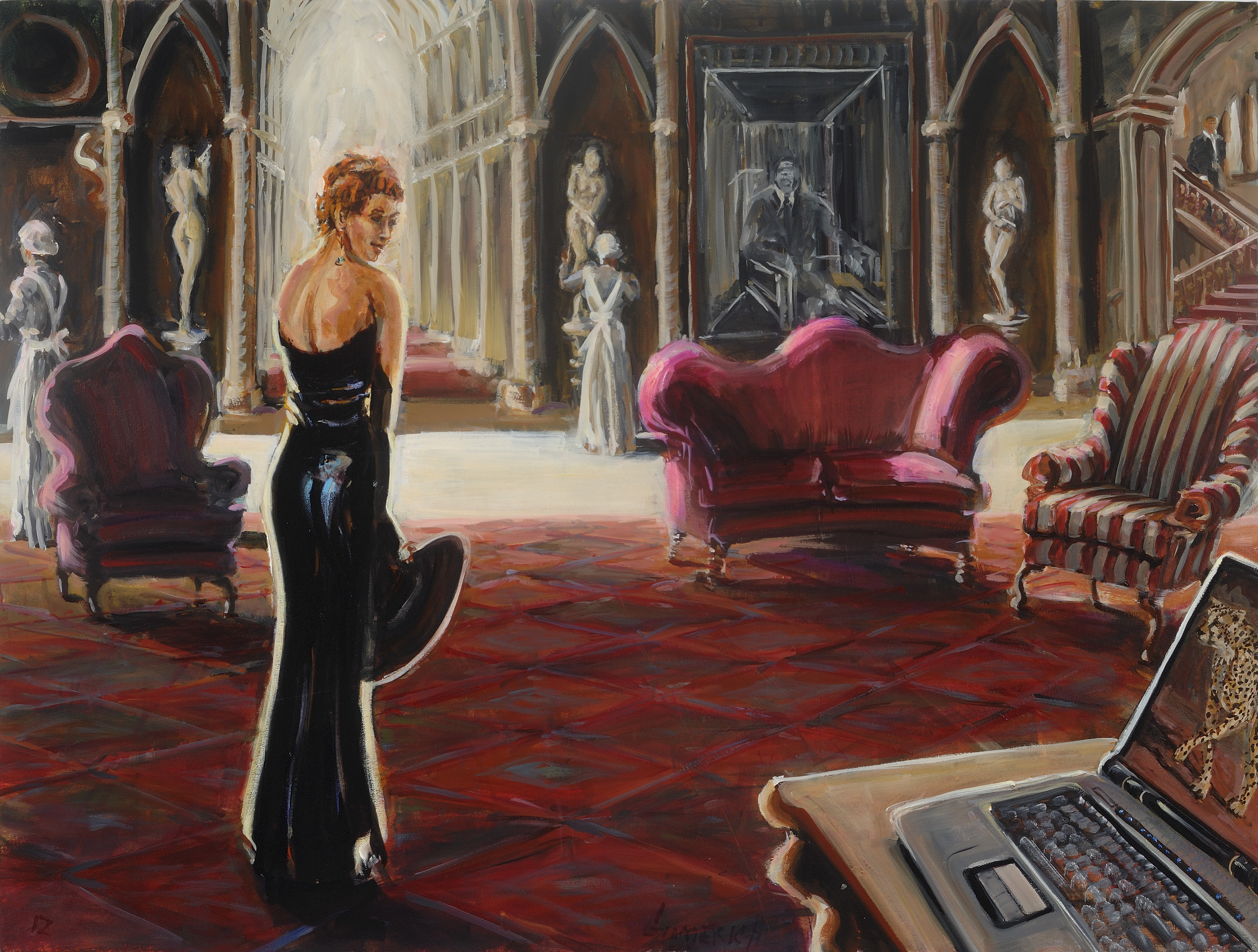Paintings That Tell a Story at Monika Olko

A relatively new art space graces Sag Harbor’s Main Street where the Merz Gallery used to stand, and for a short time after that, the Winston Gallery. Thus, the Monika Olko proves that the comings and goings of art venues in Sag Harbor is somehow a positive phenomenon, manifesting the town’s vitality and the belief that selling art is still worth a try.
The current show at the Monika Olko Gallery highlights art by Jim Gingerich, Jurek Kubina and Carl Scorza, each artist bringing a different style to the presentation. Gingerich’s work is consistent with his past series, figurative pieces that tell a story, often about a young woman and her relationship with the environment. (The female is Gingerich’s daughter in this present work ).
Such a focus recalls Eric Fischl’s juxtaposition of setting and people, imagery that also conveys a narrative. Coincidently, both Fischl and Gingerich particularly feature chairs and patterns. The same is true with Gingerich’s iconography in this series: notably a red sofa/chair and a cheetah with its strong patterning. Moreover, there’s a play on the old and new in Gingerich’s works. Consider what appears as a computer screen in the foreground contrasted with nude statues from antiquity in the background.
The narrative element characterizing Gingerich’s art is most intriguing in an image showing a girl lying on the beach, water splashing over her. We don’t know why she has landed there: is she running away from someone or something or has she found safety and security on the beach? Many of the artist’s signature figures have been located on the beach or in the water, an interesting motif that suggests diverse metaphors. For example, water could mean purity, a connotation that relates to Gingerich’s woman. It could also signify birth, another possible theme. No matter. The ambiguity of Gingerich’s art only makes his work more fascinating.
Ambiguity is at work in Kubina’s abstractions as well: large canvases with earth colors that are a feast for the eye. When we give the pieces a second and even third look, we see that a whole different image emerges: a cityscape, in one case, or a canyon in another example. They seem to appear out of nowhere, which may be the artist’s intention: highlighting the opposition between the man-made edifice and nature, respectively.
Scorza’s figures seemingly share little in common with work by Gingerich and Kubina, except for the fact that his women are at the beach. Yet we also realize that there is a presence of ambiguity here too. As spectators, we don’t know what the girl is throwing in one image; in other images, the same woman appears to have different identities. What is interesting is that context has been removed from the figures; there is no sense of time or place (except the ocean). The spectator, therefore, must imagine a “story” or plot. It’s all to our advantage.
This group show will be on view until Oct. 31 at Sag Harbor’s Monika Olko Gallery, 95 Main Street. Call 631-899-4740.



